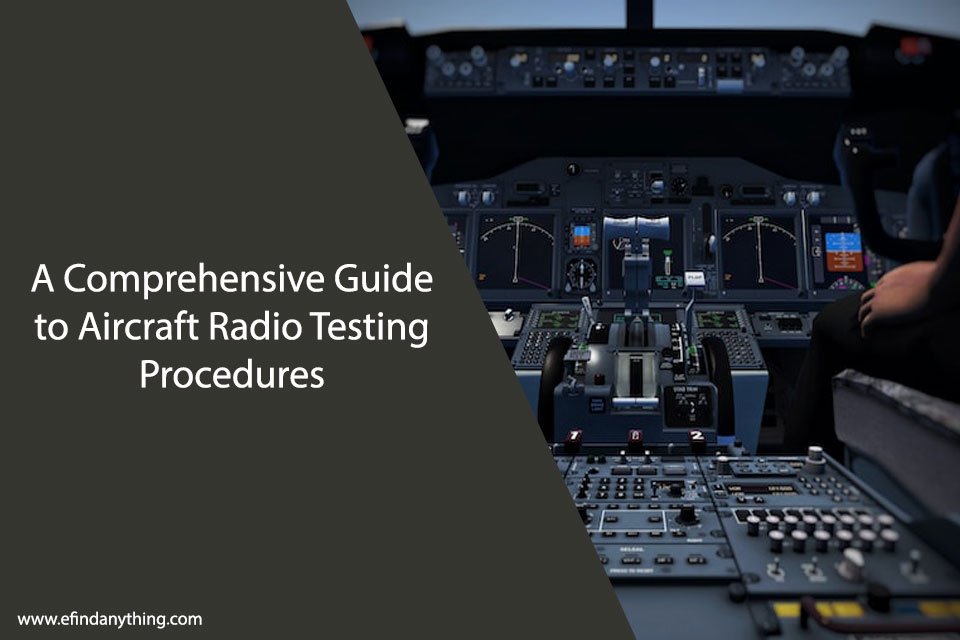
In the realm of aviation, where safety is of paramount importance, the proper functioning of aircraft communication systems is crucial. One critical aspect of ensuring the reliability and efficiency of these systems is conducting regular radio testing. By meticulously following the prescribed radio testing procedures, pilots and aviation technicians can identify and rectify potential issues before they compromise the safety of flights.
This comprehensive guide will explore the importance of radio testing in aviation, the different types of radio testing procedures, and provide a pre-flight and in-flight radio testing checklist.
Table of Contents
Why Is Radio Testing Important?
Radio communication is the lifeline of aviation operations. It enables pilots to communicate with air traffic controllers, receive important weather updates, and relay critical information to ensure safe flights. Any malfunction or degradation of the radio systems can lead to miscommunication, compromising the safety of everyone on board. Therefore, regular radio testing is imperative to identify and address any issues promptly.
By conducting radio testing, aviation professionals can verify the clarity, range, and functionality of the communication systems. They can also detect and troubleshoot any interference or signal distortion that might hinder effective communication. Additionally, thorough radio testing ensures compliance with aviation regulations and standards, promoting safe and efficient operation.
Types of Radio Testing Procedures
To conduct effective radio testing, specialized tools known as testers are utilized. These testers, like a CCX Technologies T-RX RP+ Avionics Radio & Pulse Tester, are designed to effectively assess the performance of the aircraft’s communication systems. Various types of radio testing procedures are performed using these testers, including the following.
1. Signal Strength Testing
Signal strength testing evaluates the power and intensity of the radio signals transmitted and received by the aircraft’s communication systems. This test helps determine if the signals are strong enough to ensure clear and reliable communication. By assessing the signal strength, technicians can identify any potential issues, such as weak transmission or reception, and take appropriate corrective measures.
2. Frequency Testing
Frequency testing involves assessing the accuracy and stability of the radio frequencies used for communication. This test ensures that the frequencies are within the designated range and do not deviate significantly, as this can result in distorted or disrupted communication. Technicians use specialized equipment to measure and verify the frequency accuracy, ensuring seamless communication during flight.
3. Noise Testing
Noise testing evaluates the presence of unwanted noise or interference in the radio signals. This test helps identify any sources of interference that might compromise the clarity and effectiveness of communication. By detecting and mitigating noise-related issues, aviation professionals can enhance the overall quality of radio communication.
Pre-Flight Radio Testing Checklist
Before every flight, it is essential to perform a thorough radio testing procedure to ensure the communication systems are functioning optimally. The following checklist outlines the key steps for pre-flight radio testing:
- Power On: Turn on the aircraft’s communication systems and ensure they are receiving power.
- Antenna Check: Verify the integrity and proper connection of the aircraft’s antennas.
- Signal Strength Testing: Use a radio tester to assess the strength of both transmitted and received signals.
- Frequency Testing: Measure and verify the accuracy of the radio frequencies.
- Noise Testing: Conduct a noise test to identify and eliminate any interference.
- Transmission and Reception Testing: Test the clarity and effectiveness of both transmission and reception.
- Audio Quality Testing: Assess the audio quality of the communication systems to ensure clear and understandable communication.
By diligently following this pre-flight radio testing checklist, pilots and aviation technicians can minimize the risk of radio communication issues during flights.
In-Flight Radio Testing Procedures
Even after passing the pre-flight radio testing, it is crucial to continuously monitor and evaluate the communication systems during the flight. In-flight radio testing procedures help identify any potential issues that may arise during the course of the journey. The following guidelines outline the key steps for conducting in-flight radio testing:
- Regular Monitoring: Continuously monitor the clarity and quality of radio communication throughout the flight.
- Noise and Interference Detection: Be vigilant in detecting any noise or interference that may impact communication.
- Frequency Verification: Periodically verify the accuracy and stability of the radio frequencies.
- Transmission and Reception Testing: Regularly perform tests to ensure both transmission and reception are functioning optimally.
- Backup Systems: Familiarize yourself with the backup communication systems in case the primary systems fail.
By implementing these in-flight radio testing procedures, pilots and aviation professionals can promptly address any emerging issues and maintain clear and reliable communication during the flight.
Conclusion
In the world of aviation, radio communication plays a vital role in ensuring the safety and efficiency of flights. By following the prescribed radio testing procedures, aviation professionals can identify and rectify any potential issues before they compromise the integrity of communication systems.





